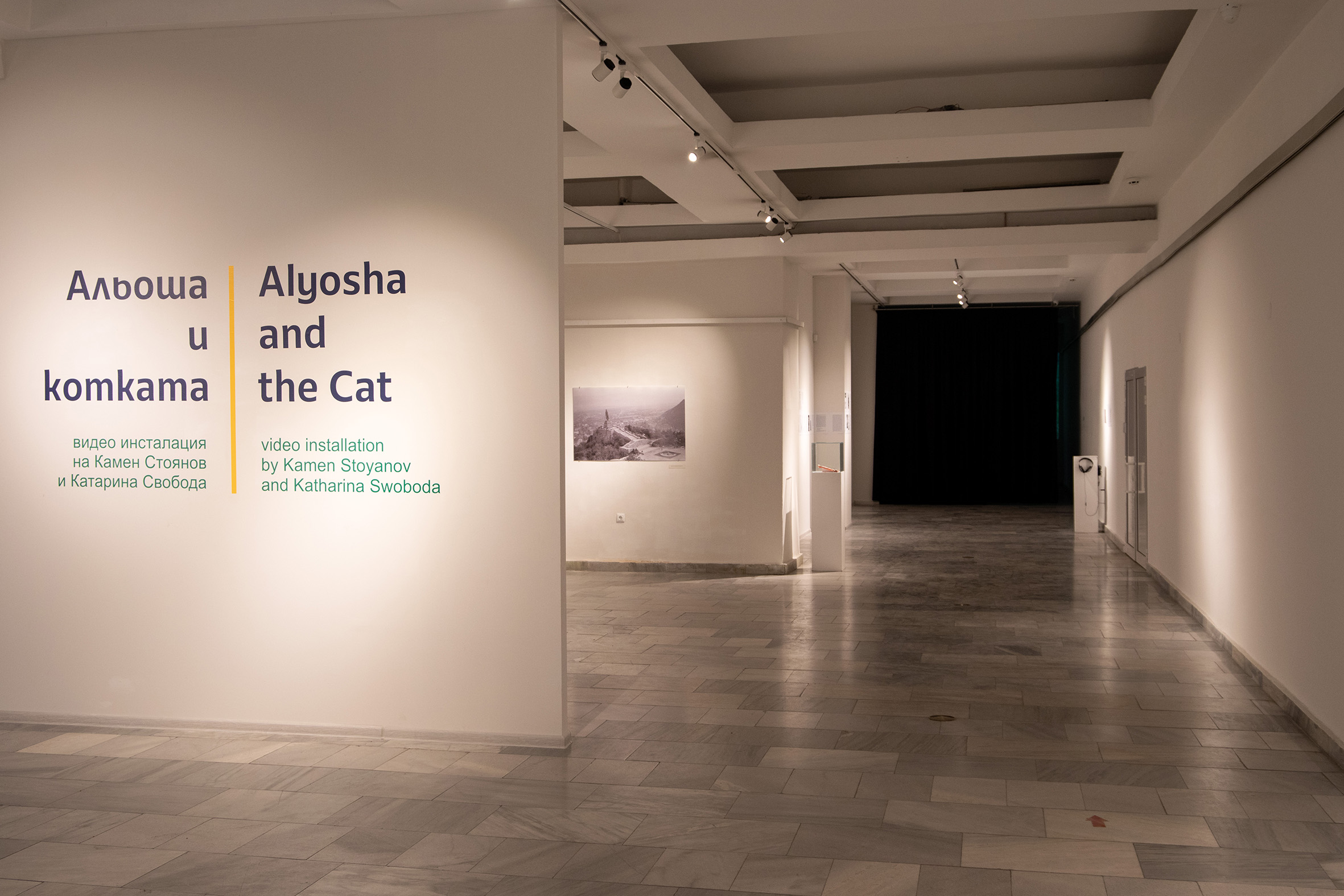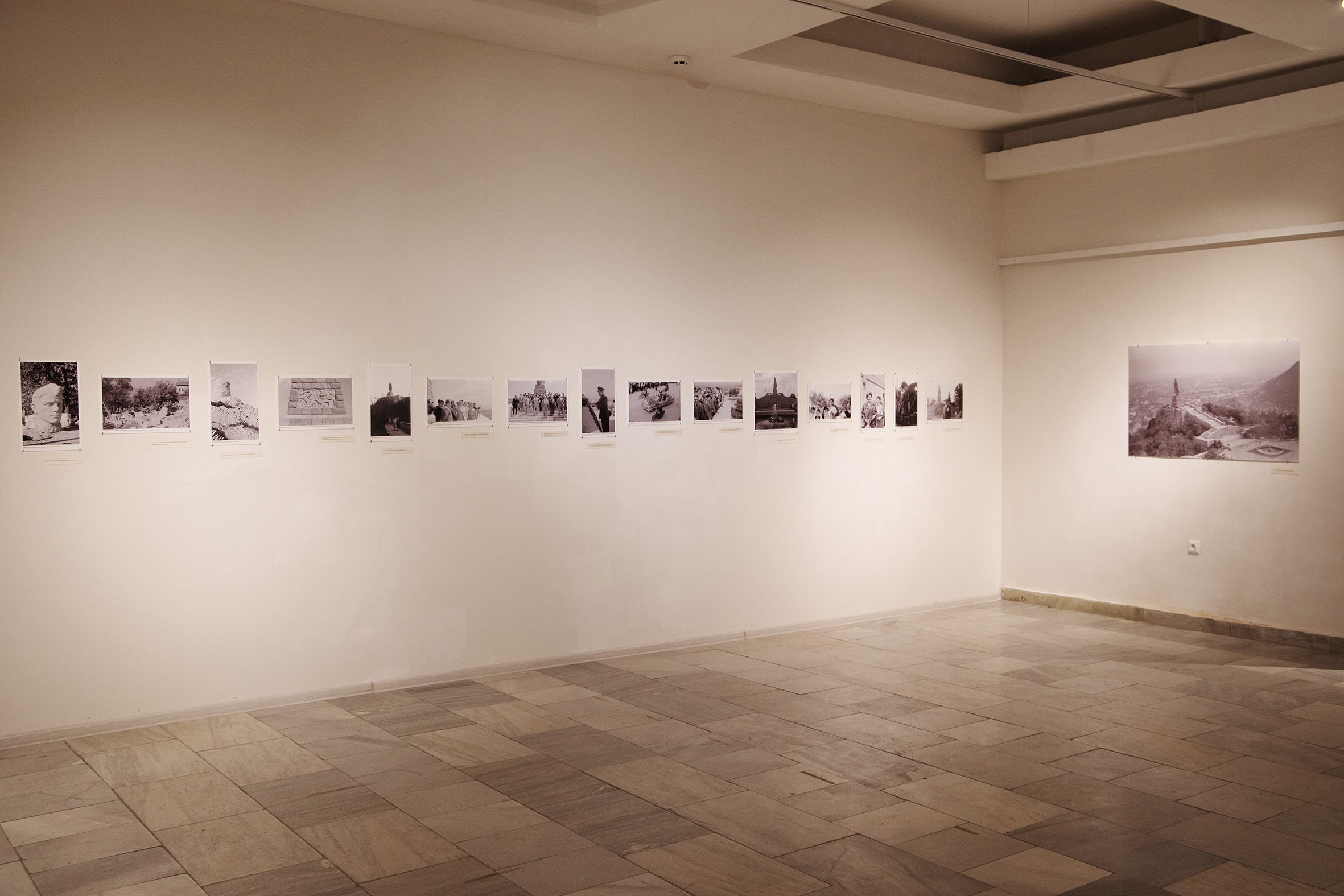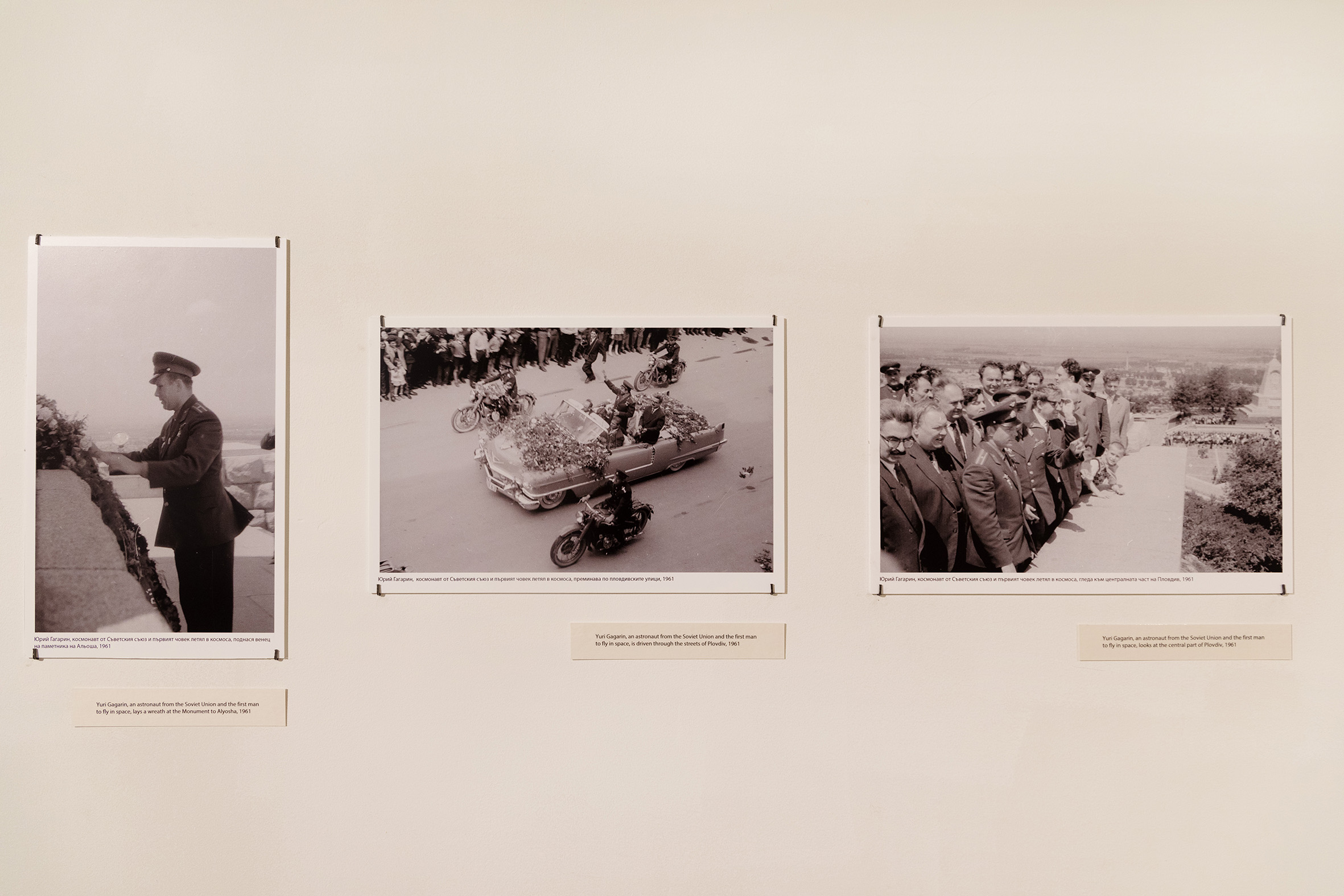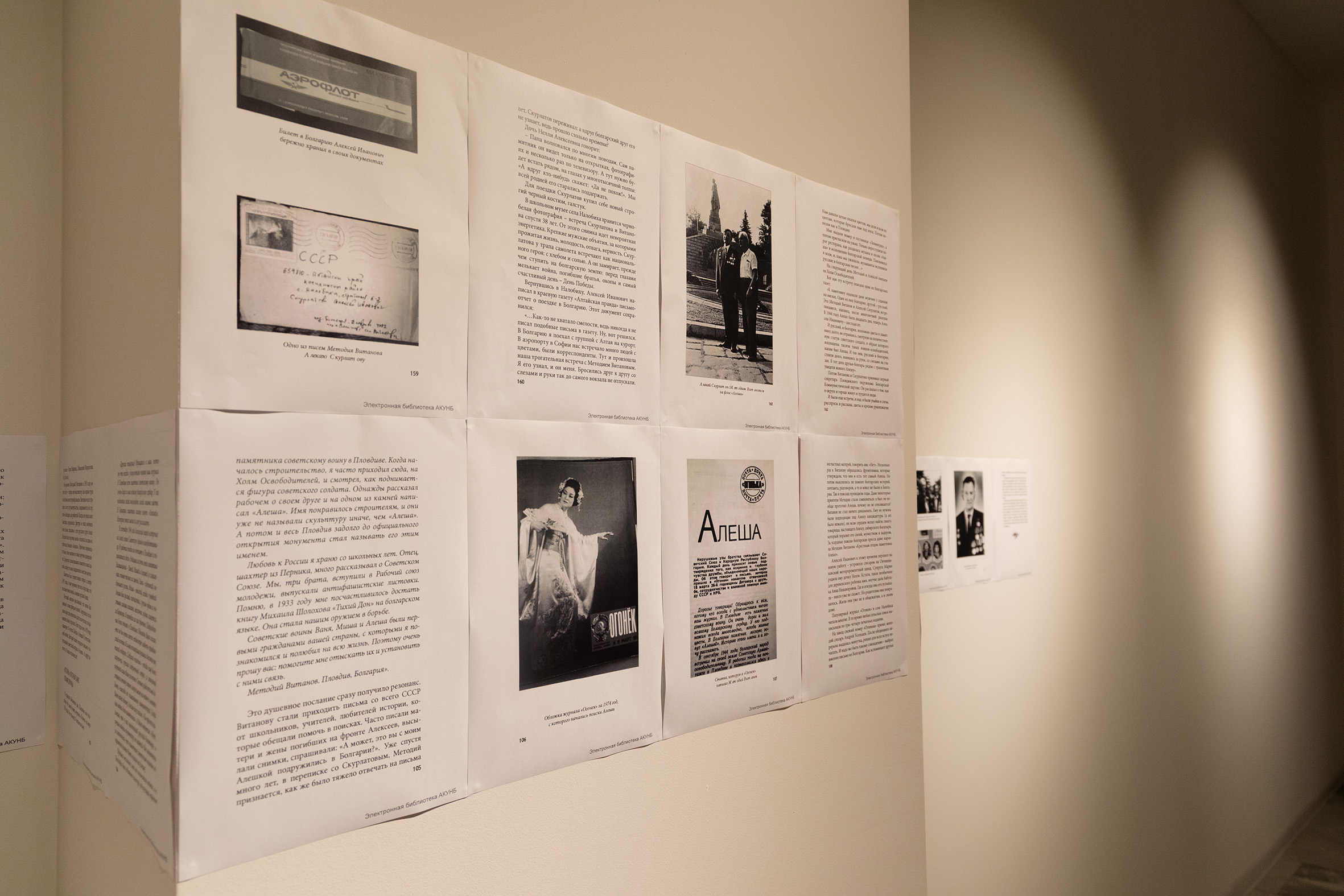The House of Humour and Satire in Gabrovo welcomes “Alyosha and the Cat” - an art installation presenting a Soviet statue. Its authors are Kamen Stoyanov and Katarina Svoboda. Alyosha is the 15-meter-tall granite sculpture of the Soviet army in Plovdiv. Another avatar of Alyosha’s can be found in Bourgas, among other Bulgarian cities. The installation in Plovdiv overlooks the city along with its other statues in a similar fashion to Rio’s Christ. The first one is a Redeemer, the second is a Liberator, though only one of them is armed with a Shpagin machine-pistol.
Alyosha is a statue from the time when Bulgaria had to be populated by Russian troops which could have remained after the Soviet military had left. The Soviet Union departed 30 years ago, however, its statues are still here. Some believe that “they guard the memory of all those Russian soldiers who have lost their lives for the liberation of Europe from fascism”. According to others, Alyosha represents the memory of an entirely abolished ideology, even in Russia.
Two opposing viewpoints on the statue’s signification form the basis of “Alyosha and the cat”. The installation consists of archived photographs, writing and a short-length film about an unusual meeting before Alyosha’s statue on the hill Bunardzhika. It is on top of the hill that two songs and two viewpoints collide. Instead of documentary, Kamen Stoyanov calls the installation demonumental.

The film explores two approaches to the statue, its history and the subsequent myths. The film’s two main characters respond to the 1966 song, “Alyosha”, with a new one, “Aleksey Skurlatov”.
Skurlatov is a Soviet soldier who served for a year in Plovdiv and who was the inspiration and model behind Vasil Radoslavov’s statue from the 1950’s. Ten years later a song was written about the statue. In it, one sings about Alyosha who found himself in the middle of gunfire and now he’s upset that he’s now made up of stone and instead of bringing flowers to the girls, they are the ones who bring him bouquets - but in comparison to all the defeated unknown heroes, at least everyone in Bulgaria knows of Alyosha.
The first recording of the song was in 1967 performed by the Red flag ansamble of the Soviet army. The song becomes very popular in Russia and has been performed by many Russian and Bulgarian singers (among whom, Bedros and Philip Kirkorov). In Plovdiv, before 1989, the song becomes the unofficial city anthem. In 1982, the real Alyosha Skurlatov comes to Plovdiv and the chorus sings to him ‘Alyosha’ whilst standing in front of the statue.


In the Russian Wikipedia it has been written that the music was created by Edouard Kolmanovski and the lyrics was written by Konstantin Vanshenkin; that it was dedicated to ‘the statue of the Soviet soldier Alyosha in the Bulgarian city of Plovdiv as a symbol and in memory of all those Soviet soldiers who died in the liberation of Bulgaria from nazi occupation during the WWII.’ The Russian sources would often offer alternative facts.
In response to that tendency, inspired by the stories about Alyosha and by conversations with Russian tourists coming to leave flowers, Kamen Stoyanov and Katharina Svoboda, with the help of the composer Margarita Spasova, re-write the song, Aleksey Skurlatov. He calls it ‘musical and textual antipode to Alyosha, a story about the pre-history of this statue and about the events in Bulgaria after the Red army’s trespassing, and how myths are created.’
As far as the cat and its role goes, it is difficult to image that anything could happen in Plovdiv without a cat peeking to observe it. If you are after a more concrete answer, you could look for it at
The House of Humour and Satire in Gabrovo for the video installation, ‘Alyosha and the cat’.

Kamen Stoyanov (b. 1977) is a visual artist and filmmaker. He grew up in Bulgaria and studied visual arts at the Academy of Fine Arts in Vienna and Film at the New Bulgarian University. His practice includes short film, documentary, single-channel video, photography, performance, installation and drawing. His short experimental film “Up and Through” 2020 was awarded as “Best Experimental” at the February-March at Dumbo Film Festival 2020 and got best experimental nominee at Long Story Shorts 2020, International Film Festival, Bucarest.
His works have been presented at exhibitions, festivals and biennials worldwide, including:
OSTRALE Biennale O21, Dresden, (2021); Long Story Shorts 2020, International Film Festival, Bukarest (2020); NOW&AFTER’20, International Video Art Festival, Moscow, (2020); In the Palace, international short film festival, Varna, Bulgaria (2020, 2019); Alyosha and the Cat, Museum of Humour and Satire, Gabrovo, Bulgaria (with Katharina Swoboda, 2020); !, Sariev Contemporary, Plovdiv, Bulgaria (solo, 2019); Exhibiting the Exhibition, Kunsthalle Baden - Baden, Germany (2018); Suburbinal Filmfestival, Groß-Enzersdorf, Austria (2018)); WRO BIENNALE, Media Biennale Wroclaw, Poland, (2017); SPIELART Festival, Munich, Germany (2015); Transmediale Berlin (2014); 17th Biennale of Sydney, Sydney, Australia, (2010); Aichi Triennale, Nagoya, Japan (2010); Looking for an Art Piece, Kunstverein Salzburg (solo, 2009); At Arm‘s` Length, MUMOK, Museum moderner Kunst Stiftung Ludwig Wien (solo, 2008); MANIFESTA 7, The European Biennial of Contemporary Art, Trentino, Italy (2008).
His works have been presented at exhibitions, festivals and biennials worldwide, including:
OSTRALE Biennale O21, Dresden, (2021); Long Story Shorts 2020, International Film Festival, Bukarest (2020); NOW&AFTER’20, International Video Art Festival, Moscow, (2020); In the Palace, international short film festival, Varna, Bulgaria (2020, 2019); Alyosha and the Cat, Museum of Humour and Satire, Gabrovo, Bulgaria (with Katharina Swoboda, 2020); !, Sariev Contemporary, Plovdiv, Bulgaria (solo, 2019); Exhibiting the Exhibition, Kunsthalle Baden - Baden, Germany (2018); Suburbinal Filmfestival, Groß-Enzersdorf, Austria (2018)); WRO BIENNALE, Media Biennale Wroclaw, Poland, (2017); SPIELART Festival, Munich, Germany (2015); Transmediale Berlin (2014); 17th Biennale of Sydney, Sydney, Australia, (2010); Aichi Triennale, Nagoya, Japan (2010); Looking for an Art Piece, Kunstverein Salzburg (solo, 2009); At Arm‘s` Length, MUMOK, Museum moderner Kunst Stiftung Ludwig Wien (solo, 2008); MANIFESTA 7, The European Biennial of Contemporary Art, Trentino, Italy (2008).
© History in Between, 2021This project is part of the Cultural Calendar of Sofia, Ministry of Culture and Sofia History Museum.
Connect:
︎ ︎ ︎
„История помежду“ ("Проект за музейни намеси в РИМ, София") е съвместен проект между Фондация „Изкуство – Дела и Документи“ и Регионален исторически музей, София, подкрепен Календар на културните събития на Столична Община.
History in Between (Project for interventions in the Museum, Sofia) is a collaboration between the Art Foundation - Affairs and Documents, and the Regional History Museum of Sofia. It is supported by the Calendar of Cultural Events of Sofia City.



